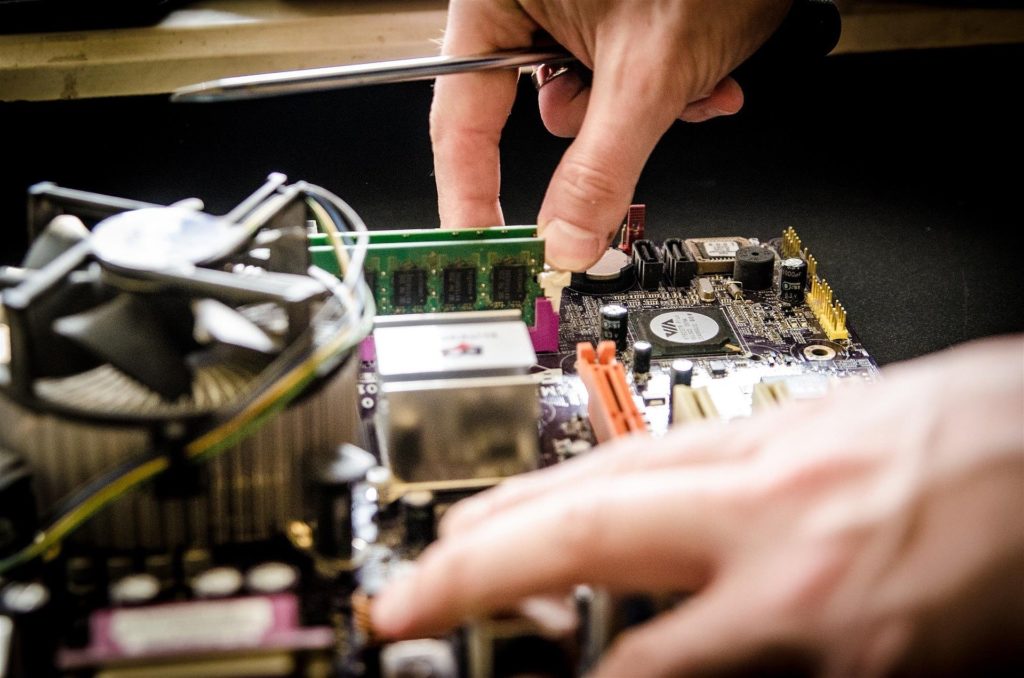European Parliament give "right to repair"

Image by Michal Jarmoluk from Pixabay
Making IT more sustainable
The European Parliament look to give the “right to repair” as a recent resolution – aimed at boosting the sustainability by encouraging repair and reuse of hardware – was adopted with 395 MEPs (Members of European Parliament) in favour. The aims of this resolution include:
- Making repairs more appealing and cost-efficient
- Increasing support for the second-hand goods market
- Demands for a common charger system across devices
- Product labelling for durability
They are also looking to introduce new rules for waste management as well as removing obstacles that prevent devices being repaired, reused, and resold.
Delving into the motion from the European Parliament, we can see some more details as to what they hope to achieve.
Consumer rights and clamping down on planned obsolescence
They call for voluntary labelling that includes:
“information on durability and reparability, such as a repair score, and could take the form of an environmental performance index, taking into account multiple criteria throughout the life cycle of products according to product category; considers that it should provide immediately visible, clear and easy-to-understand information to consumers at the time of purchase”
The plan here is to take aim at:
“practices which have the sole intent of effectively shortening the lifetime of a product to increase its replacement rate and unduly constrain the reparability of products, including software”
To one degree or another, we’re probably all familiar with this “planned obsolescence” – certainly with consumer goods.
Digital goods
The resolution states that, as part of a review being carried out by 2024, they should focus on making sure “corrective updates” – i.e. those that deal with security and conformity updates – continue throughout the estimated lifespan of the device.
They also want these corrective updates to be kept separate from “evolutive updates”, which must be reversible, and “no update must ever diminish the performance or responsiveness of the goods“.
What may be challenging to implement is that “updates must be reversible”. Both Microsoft and Apple routinely prevent firmware updates from being rolled back once applied, in part because those updates are designed to patch underlying faults that pose a security risk. For example, earlier versions of firmware for both firms’ hardware products enable copyright protection to be bypassed.
Facilitating repairs
They call for the following to be made available:
- Estimated period of availability from date of purchase
- Average price of spare parts at the time of purchase
- Recommended approximate delivery and repair times
- Information on repair and maintenance services
in the product documentation, along with a summary of the most frequently encountered failures and how to repair them.
To make repairing devices a more attractive prospect they also want to give independent repairers and consumers free access to necessary information including info on diagnostic tools, spare parts, software, and updates, needed to perform repairs and maintenance. Ultimately, they want to guarantee the right to have goods affordably repaired. Whilst not specifically targeted at Apple, this should roll back the gradual freezing out of independent repairers for Apple hardware that’s been going on for several years. For example, repairers must be authorised by Apple in order to have access to the necessary online diagnostic tools to fault-find and fix Apple hardware.
Environmental impact of data
Another section of the document covers the impact that unnecessary data such as spam emails, unused apps, old files can have. I assume this relates to the fact that these all take up room somewhere which ultimately requires additional storage hardware to be purchased – whether by the individual consumer or at a cloud-provider hyperscale level.
The resolution builds on the European Commission’s proposal earlier this year for a new “Circular Economy Action Plan” which aims to reduce the EU’s consumption and double reuse of materials.
Other initiatives related to the right to repair
France
January 2021 will see France introduce a “repairability score” for products, including laptops and smartphones, that will take into consideration factors such as:
-
- How easy it is to take apart
- Price of spare parts
- Availability of spare parts
- Access to repair info
Many of which are also covered in the European Parliament’s resolution.
Austria
Several Austrian states now offer a “repair bonus” which funds up to 50% of the repair cost for certain electrical appliances, capped at €100.
Conclusion
The European Parliament moving to give the “right to repair” in this way is a great step towards increasing the sustainability of IT, both within the consumer and business spheres. That, coupled with other efforts and a growing awareness among organisations and individuals, means this is a topic of increased focus throughout the 20s and beyond.
Further reading
Circular Economy Action Plan
European Parliament adopt “right to repair” resolution
European Parliament report
Halte à l’Obsolesence Programee (HOP)
EU Right to Repair
ITAM and climate change
Can’t find what you’re looking for?
More from ITAM News & Analysis
-
Software Vendor Insights: What do the numbers tell us about the opportunities for ITAM negotiations?
What software vendor insights can be gained from the latest financial results from Amazon, Google, Broadcom, Salesforce, IBM and SAP? An important part of ITAM is paying close attention to the health of the companies we ... -
Flexera is first SAM tool vendor verified for Oracle E-Business Suite applications
Flexera has announced that it has been verified as the first software asset management (SAM) tool vendor for Oracle E-Business Suite applications. Almost anyone with an Oracle estate will be familiar with the company’s License Management ... -
ITAMantics - March 2024
Welcome to the March 2024 edition of ITAMantics, where George, Rich and Ryan discuss the month’s ITAM news. Up for discussion this month are. Listen to the full ITAMantics podcast above or queue it up from ...